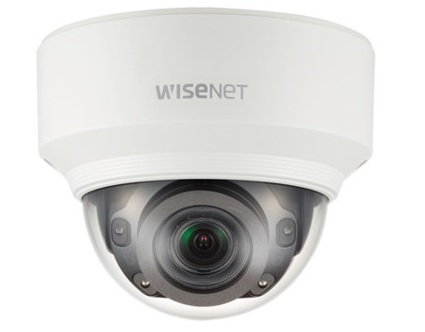Hanwha Techwin America has launched its most advanced chipset to date, Wisenet 5, and also announced that it would be removing the Samsung branding on the new X series line of cameras that will be powered by it. According to Tom Cook, vice president of sales for North America at Hanwha, the branding on the company’s cameras will transition from Samsung to Wisenet, which he says is now well-known in the marketplace. “Our co-branding has been going on for the last four or five years of Samsung powered by Wisenet… so at this point we’ve decided Wisenet has become a strong enough name that we’re going to start utilizing it as our brand for our cameras,” Cook says. “It will start with the X series immediately and follow through in the future on all new products. We will ultimately fade out the Samsung name as we go in time.”
Cook says the new Wisenet 5 chipset will “define a new standard” in the industry when it comes to video surveillance technology. It will be available in the company’s new Wisenet X series camera line, which boasts 27 different models that will support a mix of both 2-megapixel and 5-megapixel resolution cameras. Cook says what really separates the capabilities of the Wisenet 5 chips in the X series from previous generations is its Wide Dynamic Range (WDR) and data compression capabilities.
The standard WDR performance on the new 2-megapixel cameras models will be 150dB. Cook says the best that most cameras available on the market today can offer is about 120dB.
“With the technology of a 60 (frames-per-second) camera today, you basically take the light and the dark exposure and you take 30 frames of light and 30 frames of dark and you fuse those frames together thus getting a 30fps camera with a Wide Dynamic Range of approximately 120dB. If you use a regular 30fps camera with digital you can probably only get about 60dB or 70dB,” Cook explains. “Many companies have gotten to that point that we had back in 2013 (with the launch of Wisenet 3) and we’re now using this chipset – it’s basically 120fps camera chipset that allows us to take four images, a long exposure, a short exposure, a medium exposure and an even longer exposure, giving you four pictures fused into one frame.”








